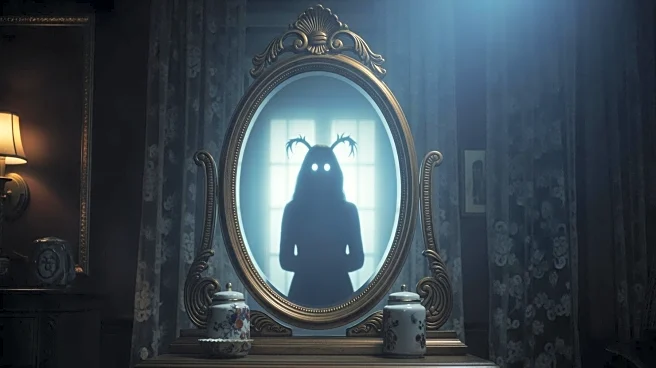What's Happening?
The TV show 'Yellowjackets' underwent significant changes from its original pitch, which was shared by co-creators Ashley Lyle and Bart Nickerson in a retro yearbook style. Initially, the pitch deck set
the plane crash in 1975, rather than 1996, adding a historical context related to Title IX and second-wave feminism. The adult timeline was originally envisioned to be filmed as a documentary, focusing on the survivors' reflections 25 years after their rescue. However, the show opted for a traditional narrative style, allowing for more dynamic storytelling and character development. The decision to set the crash in 1996 capitalized on Y2K nostalgia, appealing to multiple generations.
Why It's Important?
The changes in 'Yellowjackets' from its original pitch highlight the evolving nature of storytelling in television, where historical context and narrative style can significantly impact audience engagement. By shifting the timeline to 1996, the show taps into popular cultural nostalgia, broadening its appeal across different age groups. The choice to abandon the documentary style allows for richer character exploration and plot development, which is crucial for maintaining viewer interest over multiple seasons. This decision reflects broader trends in TV production, where creators balance historical themes with contemporary storytelling techniques to enhance viewer connection.
What's Next?
As 'Yellowjackets' progresses into its fourth and final season, the show will continue to explore complex themes and character dynamics that have been central to its success. The narrative choices made in the adaptation from the original pitch will likely influence future storytelling approaches in television, encouraging creators to consider how historical context and narrative style can be leveraged to enhance viewer engagement. The show's conclusion may also prompt discussions on the impact of modern technology and societal themes in shaping TV narratives.
Beyond the Headlines
The adaptation of 'Yellowjackets' from its original pitch underscores the importance of flexibility in creative processes, where initial ideas can evolve to better suit audience preferences and cultural trends. This evolution reflects a broader industry shift towards integrating historical themes with modern storytelling techniques, offering insights into how TV shows can remain relevant and engaging in a rapidly changing media landscape.











